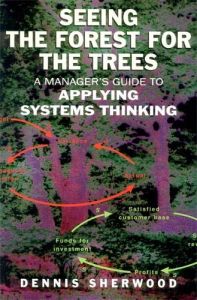Join getAbstract to access the summary!

Join getAbstract to access the summary!
Dennis Sherwood
Seeing the Forest for the Trees
A Manager's Guide to Applying Systems Thinking
Nicholas Brealey Publishing, 2002
What's inside?
Systems thinking agrees that the whole is greater than the parts, but you have to track how the parts affect the whole.
Recommendation
This is an extraordinary, in the sense of out-of-the-ordinary, book. Flipping through it, you see page after page of loops and curves. At first, you might think it is a guide to drawing. And in a sense, it is. Most of the book explains how to use depictions of various types of loops to represent different kinds of business problems. Such problems never occur in isolation, because every business is a system, and everything that happens in a business has causes and effects that reach into other areas of the business and into the outside world. Author Dennis Sherwood is not peddling a simple notion, but rather is explaining "systems thinking," a method of analyzing systems and processes. getAbstract.com unexpectedly found this quite entertaining, written with a light touch and bound to give almost any manager some new, valuable insights. On the down side, the author probably could have delivered his core message more succinctly, and after a while his insistence on demonstrating and categorizing the species and genera of loops begins to seem, well, a bit loopy.
Summary
About the Author
Dennis Sherwood is the author of seven previous books including Smart Things to Know about Innovation and Creativity and Unlock Your Mind. A former consulting partner with Deloitte Haskins & Sells and an Executive Director of Goldman Sachs, he is now Managing Director of The Silver Bullet Machine Manufacturing Company Limited.
















Comment on this summary